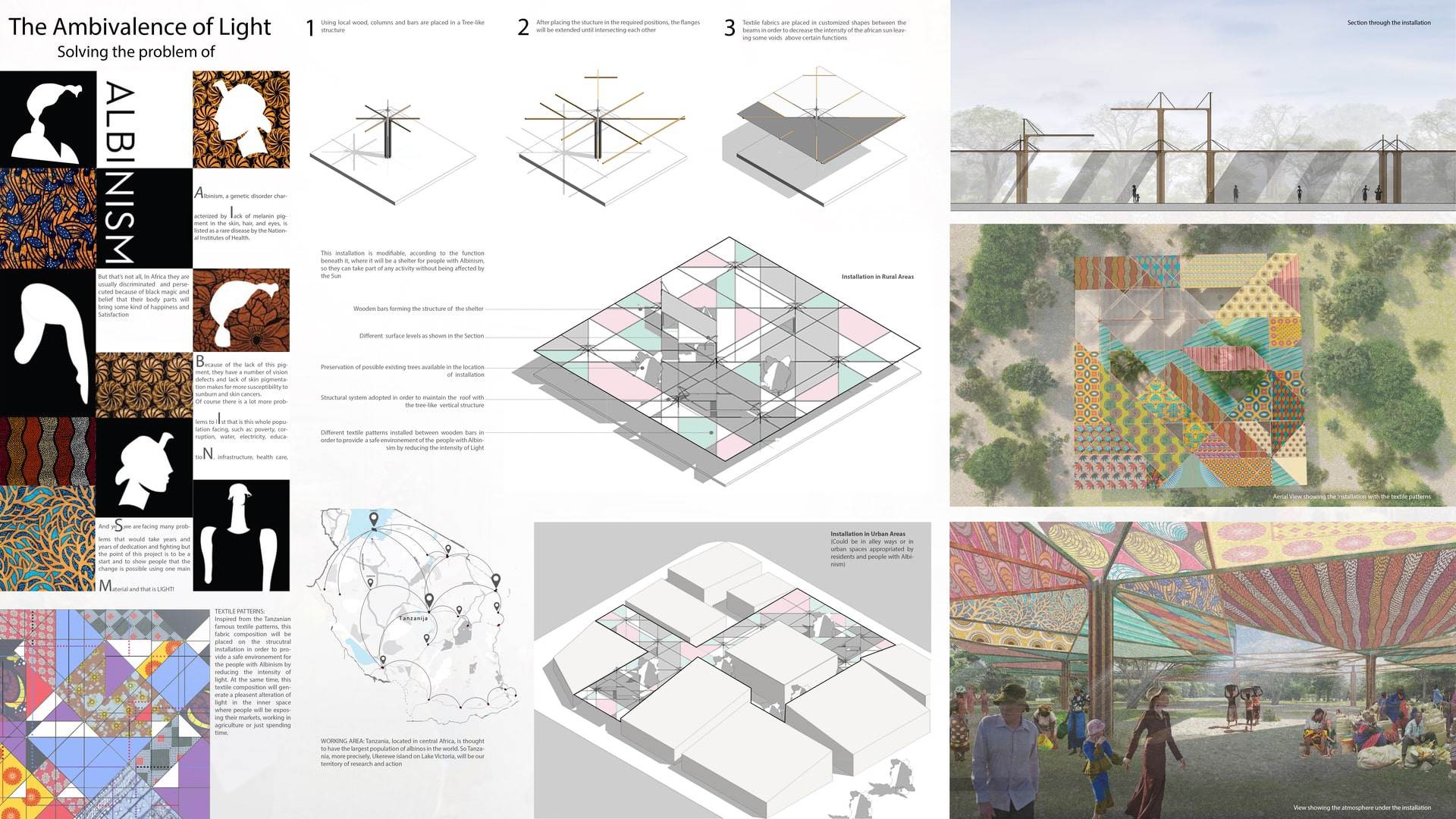Project Description
Albinism, a genetic disorder characterized by lack of melanin pigment in the skin, hair, and eyes, is listed as a rare disease by the National Institutes of Health. People who suffer of this have a number of vision defects and lack of skin pigmentation makes for more predisposition to sunburn and skin cancer. But that’s not all. In Africa they are usually discriminated and persecuted because of the black magic and A belief that their body parts bring some kind of happiness and Satisfaction. And yes, we are facing many problems that would take years and years of dedication and fighting but the point of this project is to propose one of many possible starting points in addressing this problem. Additionally, to show to the people that this change is possible by using an ancient material: LIGHT! Our proposal is to start the process of improving the quality of life of people struggling with albinism as well as of all residents of Tanzania or even Africa. Our proposal consist consists of creating an ambience that is protected from direct sunlight. However, the aim of the project is not to cut off from sunlight completely, we want to limit its direct effect on the skin of people, but to use its unique property to create the atmosphere of the place that is suitable for all people but in the same time ‘softly’ protect the albinos as well. The structure of the protective elements is based on local wood and fabrics. The fabrics we offer represent three most common types of pattern in Tanzania: Masai Shuca, Khanga and Kitange. Each protective element employs different set of patterns, giving them a colourful and local character. The structure itself allows partial penetration of the sun through the fabrics, which creates interesting projections to the ground. The project is envisaged for the urban environment as well as for locations in the countryside, where, unfortunately, people with albinism suffer most. The urban version of a protective element is designed as a roof that covers a space between buildings, while the rural version of a protective element is a free-standing structure. With full awareness, we do not propose a design for an object that will represent a safe "fortress" for people with albinism. Our goal is not to focus on an exclusive solution, intended only for albinos either. We cannot eliminate the occurrence of albinism in this part of the world, but what we can is to point out to the education of general population, because it should be stressed-out that the acceptance of any kind of improvements in public ambiences depends on the general ‘feeling’ that everyone and not just a specific group within population benefits from it. We want to create a nation-wide and adaptable infrastructure that will help to improve the quality of life, which will also result in an increased level of self-awareness and tolerance among people in general.
